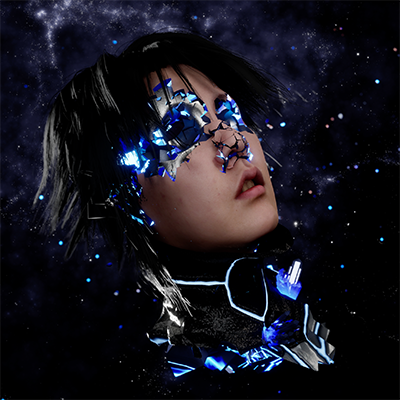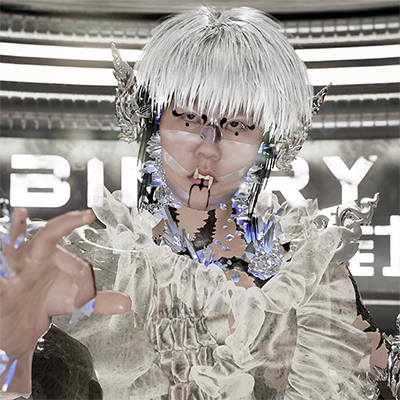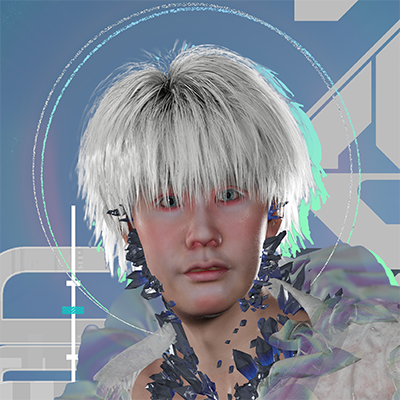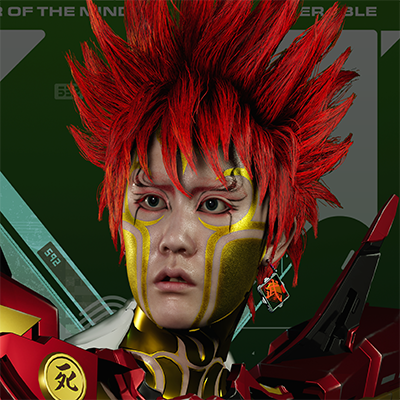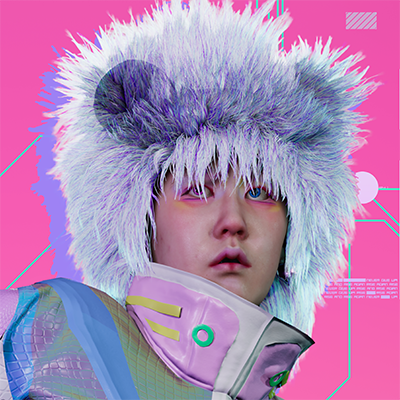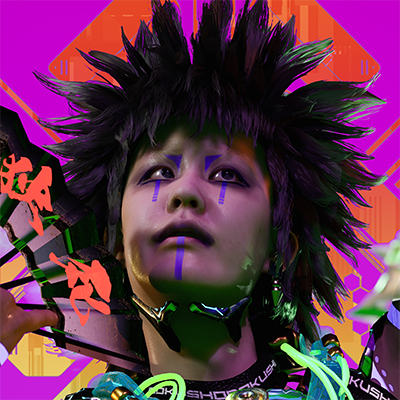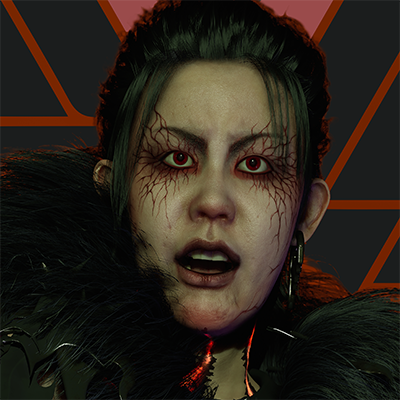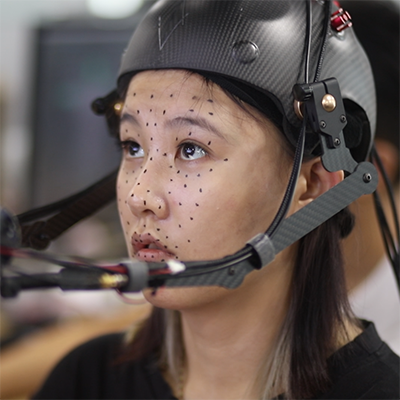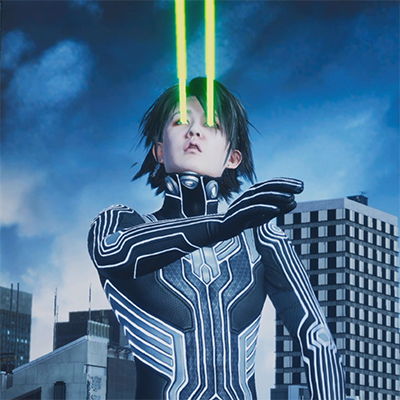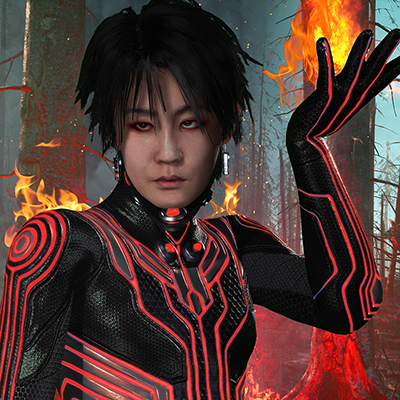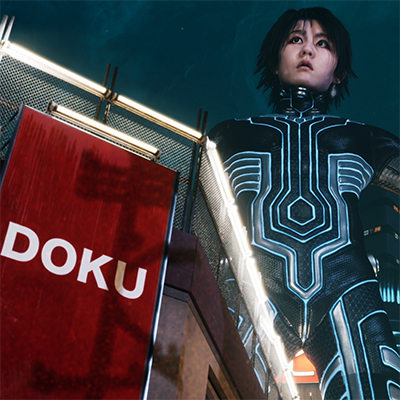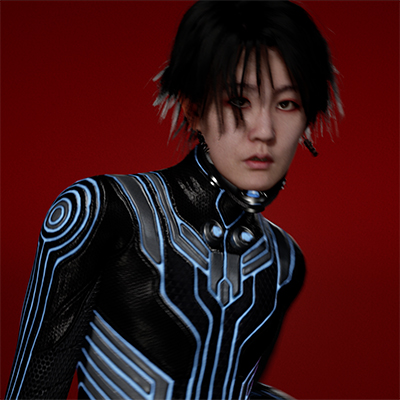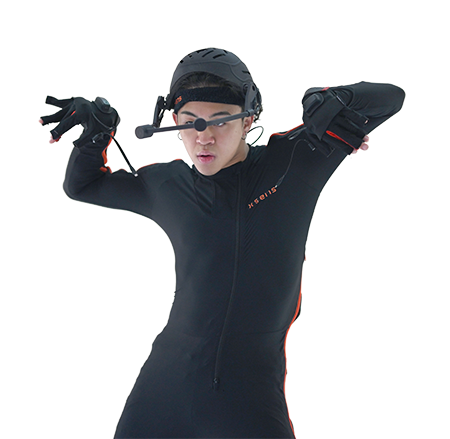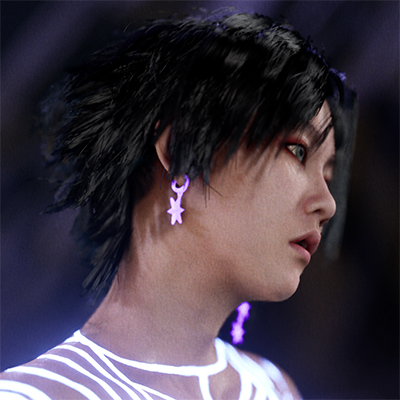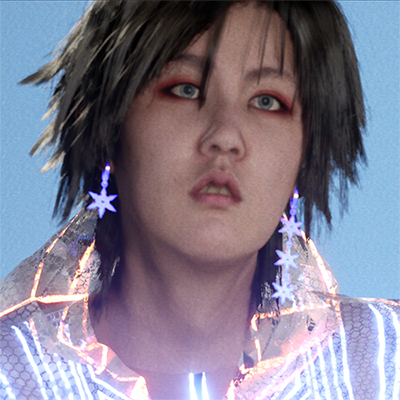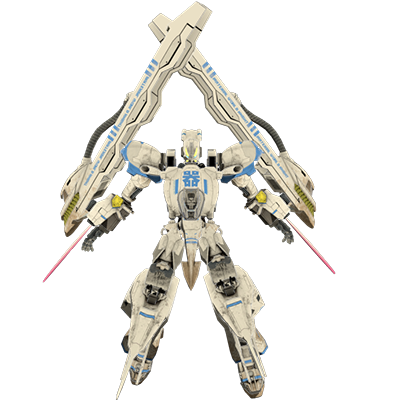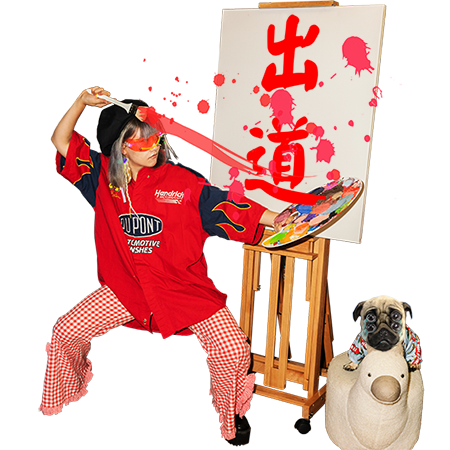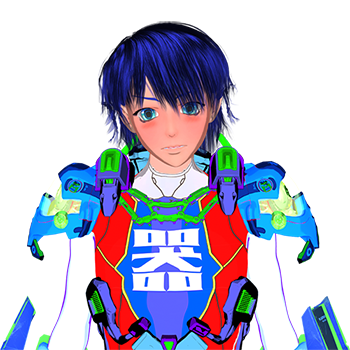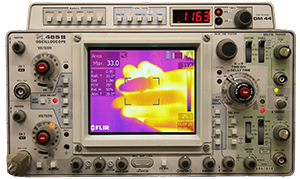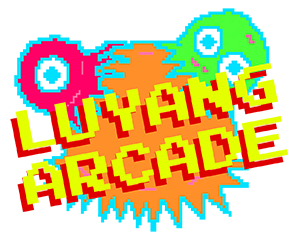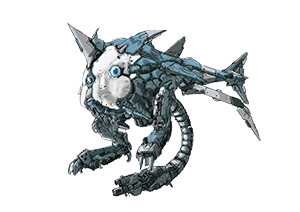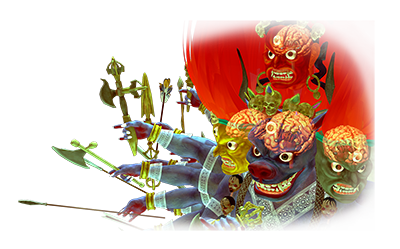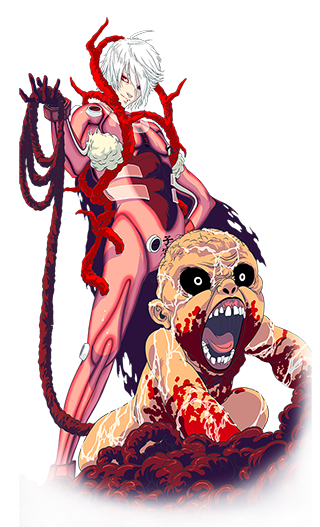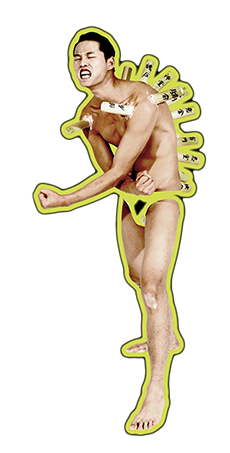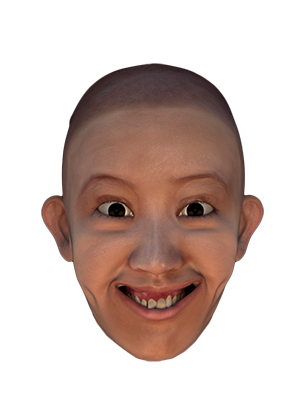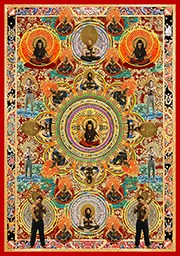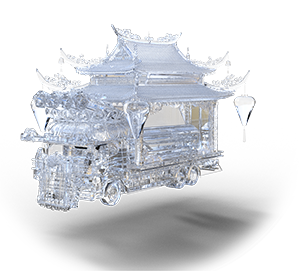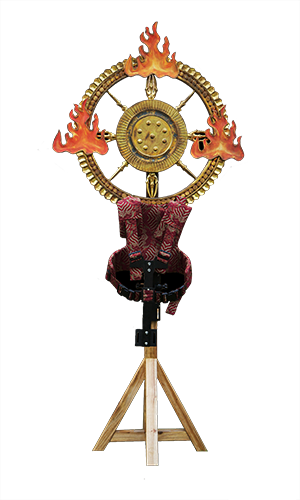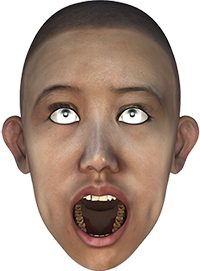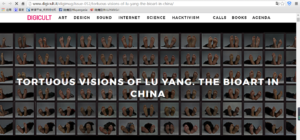 http://www.digicult.it/digimag/issue-052/tortuous-visions-of-lu-yang-the-bioart-in-china/
http://www.digicult.it/digimag/issue-052/tortuous-visions-of-lu-yang-the-bioart-in-china/
Robin Peckham
TORTUOUS VISIONS OF LU YANG. THE BIOART IN CHINA
New media art in greater China, when it is present, tends toward the conservative: re-engineered video games, simplistically interactive video installations, and sound art are the norm. In a few corners, however, a new wave of artists is pushing this envelope and developing new strains of practice based particularly around the complementary poles of aesthetic coding and, most intriguingly, biological matter.
One of the leaders of this new foray into bioart is Lu Yang, a young artist born 1974 in Shanghai and now based both there and in Hangzhou, where she earned two degrees in the new media department of the China Academy of Fine Arts. Though her work has been widely shown at major alternative spaces throughout China and has earned the support of major figures like artists Zhang Peili, Yao Dajuin, and Wang Changcun and curator Zhang Ga, it has yet to receive much critical attention in either Chinese or English.
This is surprisingly, especially given the obscure aesthetics and conceptual invocations of major social issues present in her best work. Like most artists working in biological media internationally, Lu Yang is no stranger to controversy–but her particular interventions into the political order of bodies via electrical, visual, and aural apparatuses is courageous in a critical sense, denying a humanist aesthetics in favor of a rigorous explanation of the callousness towards life beyond the self within some systems of Chinese philosophy.
Her best works borrow equally from the sheen of science fiction and the history of anti-humanist image-making in the contemporary Hangzhou tradition, questioning the possibilities for future development set out in the collective imagination of both our literary fictions and our built realities.
Perhaps this is the beginning of a new ethics of the biopolitical imbued with the productivity of the experimental, searching for an alternative to the ideology of efficiency through an exploration of technical forms and life as content. I sat down with Lu Yang in order to find out.

Robin Peckham: Let’s start at the very beginning. You were born in Shanghai in 1984, which raises two questions. First: how do you feel about the idea of Shanghai as a distinct artistic culture? The past several years have seen a renewed interest in a certain fashionable notion of “haipai,” a so-called Shanghai style that might include video artist Yang Fudong, installation artist Xu Zhen, and conceptual painter Zhou Tiehai–all artists from different circles, but they have nevertheless been labeled under a single movement. Is your work related to this phenomenon?
Lu Yang: As a Shanghainese, you could actually say I’m not very purely Shanghainese, not because of my parents genes, but rather perhaps because I left Shanghai for school at a very early age. Normally the intellectual and cultural ideas with which I’ve been in contact come from multiple sources, so personally I’ve never really considered regionalism as a source or major component of my life and work as an artist. I don’t think many artists in Shanghai would place themselves within that “haipai” framework either, it seems to come mostly from external criticism.
Robin Peckham: You earned both your bachelor’s and master’s degrees at the department of new media art within the China Academy of Fine Arts in Hangzhou, one of China’s two premier art schools. What kind of influence has this background had on your work?
Lu Yang: I spent almost seven years in the new media department. Because I came into contact with contemporary art early on in life, when I applied for entrance to the China Academy I was interested in a more experimental, diverse artistic production, so the new media department was the best choice I could possibly have made. Without getting into technical issues, I think the new media department offers something above and beyond any other faculty in the academy: diverse perspectives on styles and practices of art.
Robin Peckham: With whom did you study, primarily? Your last museum solo exhibition in Shanghai was curated by Zhang Peili, the founding chair of the department and a pioneer of video art in China; could you describe his influence on your education? How do you understand his place in the history of Chinese media art? I previously worked him in a gallery context, and I always enjoy hearing what his students think of his work.
Lu Yang: Zhang Peili directed my master’s thesis and his encouragement has certainly been a major factor in my production; he is a great educator and a great artist.
Robin Peckham: When speaking of the new media department I can’t help but think of another issue that has always fascinated me. Many graduates of that program don’t end up using technologically progressive media within their work, and some of them don’t even understand basic computing tasks, but there is nevertheless a certain perspective on the newness of media that remains evident in their work–I’m thinking here of Zhang Liaoyuan, the members of Small Productions, and perhaps a few others. My impression is that you don’t really belong to this category, but how do you see the question?
Lu Yang: “New media” sounds very cool, very sophisticated, but considering the question from a purely technological perspective we’ve always been far, far behind the advanced end of high technology. I imagine that some of the artists you mention work through an educational process that involves the consideration of technique and art and the relationship between the two, while others might totally abandon the idea of technology or technique within art–there are all kinds of possibilities..
Robin Peckham:How did you learn certain technical processes, or how did you become interested in new media to begin with–how did this interest arise, and what process has it gone through both within and beyond the new media department?
Lu Yang: I am independently interested in both art and technology, so I never forced myself to learn any technological skill sets just because of my studies. In fact, I think my interest in science vastly exceeds my interest in this abstraction of “art.”
Learning is natural, it is not limited to signing up for specific tutoring courses in whatever subject or the reductive process of first learning and then opportunistically putting that knowledge into action. The motivation behind my self-education is my creative production, so whatever technological skills my work needs, I naturally carry out research and study.
Robin Peckham:Now I’d like to ask about a few more general issues, particularly revolving around the nexus between technology and politics. To begin with, for some of your more complicated works, how did you pick up the requisite techniques? Are all the effects created by your own hand, or have you used technicians and assistants? Have you studied any programming? Or biology?
Lu Yang: Technology and politics? That’s an issue I haven’t really considered. I’m totally uninterested in politics, as long as it doesn’t influence my immediate and tangible interests. As for technologies used in my works, that varies from piece to piece. For example I typically have to find help for programming computers and other devices, but for the production of biological projects I rely solely on my own educational background. Simple technological issues I will resolve myself as much as possible, but sometimes I do have assistance with particular problems.
Robin Peckham: How familiar are you with contemporary international discourses of amateur biology and bioart?
Lu Yang: I am very much interested in bioart, and I’m sure that’s something that comes to mind when you see my work. I need to continue studying biological sciences and anatomical sciences, broadening my understanding of the newest technological procedures–this is a major point of interest for me. Within China, you very rarely even hear this term “bioart.”
Robin Peckham: With that out of the way I hope we can talk a bit about your recent works of the past three years or so. The earliest one of you works I’ve seen is actually an animation dated to 2006. Looking back on that work now, how do you see that energy? How has your productive process changed since them? Do you see a shared aesthetic with other young Hangzhou animators, like Wu Junyong or Sun Xun?
Lu Yang: I think that animation was actually a homework assignment for some class or other, and at the time it took me a huge amount of effort to pull the project together. Ha, in my memory now I recall how persistent I was in working on such a simple project back then. I don’t think I’ll work any further in animation production–it really is too difficult, too tiring to work in such a labor-intensive medium, to know that each such work is produced entirely independently. I am not terribly enthusiastic about animation as a style, so of course I don’t think I have much of a relationship with that circle of animation artists.
Robin Peckham: Than, there was Ghost Bed (2006), basically a silicone mask with tiny motors under it that moved very slightly, mimicking the involuntary paralysis of nightmares and other situations during which the body is uncontrollable. Was there a live performance component to that piece? Was the installation interactive? How was the project received in Basel at plug.in festival?
Lu Yang: There was an entertaining phenomenon during that exhibition, which proves the validity of your question, which is that many viewers thought it was interactive, when in reality the face is just making ever so subtle mechanical movements, very repetitive. If you don’t look at it carefully, you might not even be able to tell that it moves at all, so many got the impression that it was interacting with them as they moved closer. I think it is easy to extrapolate from that incident a major problem with so-called “media art” as a whole: increasingly, simplistically interactive works have trained art audiences to respond reflexively.
It might have been hilarious, but we should reflect seriously on the issue: I never make supposedly interactive work and never install sensing modules of any kind in my work, because I believe that if you are not attracting the audience to interact very naturally and and at the same time strongly exciting them to some degree, then there is no reason to contemplate what kind of game you’re making for your audience to play with.
Such a game might as well be low-tech, or better yet send the audience to play with arcade game machines–ha ha. Personally, I would never produce new work based first on the perspective of a particular technology. I think there is a phenomenon evident in much “high-tech” Western work where however you look at it in terms of technology, style, or material it is all very impressive, but you just glance at it once and then pass by–there is no way to incite deeper thinking or reflection, or you might even call it boring.
Robin Peckham: It actually reminds me a bit of the Paul McCarthy work currently on view at the London branch of Gagosian Gallery, Mechanical Pig (2003-2005) in which a silicone pig, which moves, sits atop some complex of very obvious, very explicit machinery. The theme of that exhibition is the artistic heritage left by J.G. Ballard. I wonder, have you read his work? What do you think about his visions of Shanghai, or his science fiction in general? Do you read any Chinese science fiction?
Lu Yang: I haven’t seen that Paul McCarthy work, but thanks for recommending J.G. Ballard, I will have to read up on more of his work in the future. My interest in science fictional work is relatively recent, and the only Chinese science fiction writer I know is Ni Kuang [a martial arts and science fantasy novelist widely read but rarely respected]. There are two American science fiction movies that I enjoyed recently, Moon from 2009 and The Man from Earth from 2007. Star Trek is also very cool. I am in the process of turning from a horror film buff to a science fiction fan, so Yao Dajuin has joked that I’m turning from religion to science. I suppose from now on I’ll belong to the geek phase of life.
Robin Peckham: Where does this work Part of Cupboard (2007) come from? It basically consists of very many photographs of the bottoms of feet recalling corpses in a morgue fit onto a grid; each photograph is taken from a slightly different angle causing an anxiety of perspective. How do you see it in terms of visual expression? Would you refer to the project as an archive of inorganic (or formerly organic) material?
Lu Yang: This is one of my personal favorite works, in which I turn the lens to capture images in a style that frames perspective in an interesting way. I assume the archive you refer to would be a documentation of those people? With this work many viewers will notice certain details, largely because the images of the soles of feet that make up the overall composition of the work allow the viewer to guess particular details of each individual, such as age or experience.
But I, on the other hand, believe that the work needs to be viewed in total from a distance that it is the forceful notion of perspective both composed of and lying within the two-dimensional visual effect that makes it interesting. You have to stand around ten meters away from the work and directly in line with its center for this forced perspective to make sense visually; otherwise, there is a conflict between the actual perspective of the exhibition space and the image perspective of the work.
Robin Peckham: The Rack (2008) seems to be an installation of collective castration, consisting of a torture device into which penises can be locked and a photograph of the device in use by a half dozen blindfolded men. It actually feels a bit humorous, closer to the kind of work the Shuangxi Art Center collective makes, full of youthful, pubescent energy, rebellion, and jokes. Actually, more like what I have come to expect from graduates of the new media department in general. As a female artist working in the new media art circle in China, do you ever sense a certain pressure in this regard? Does this work approach those issues?
Lu Yang: As a female artist there is occasionally a feeling of pressure or unfairness. Perhaps the creation of this work was just venting the evil desires in my mind, ha ha. But the production of that piece was very polished–the design of the torture device, varnishing, distressing, and all of those processes were completed by my hand alone
Power of Mind/ Power of Will (2008) is another more humorous piece, consisting of a video or photograph out of the eyes of which neon green laser pointers beam into the darkness. Perhaps this is closer to the realm of purely media theory based art that we find in some Western contexts. In terms of more casual work like this, how do you understand its links to the more “perverse” projects you work on?
Recently I’ve been working on developing this work into a series called the Power of Will Plan. I will use the same format to produce more works belonging to the series, because I feel the idea still needs further excavation and development–therefore, continuation is the best strategy. Perhaps what is interesting in terms of this work is the gradual development from the earliest version, which was just a photograph with two holes punched over the eyes–very low-tech–towards a more high-tech advancement; I think this process is quite interesting in and of itself. My thinking on this process is dendriform or tree-like, tending towards extension and widening; it is not that each work must maintain a certain style, but the full project should reflect an overall feeling of authorship.
Robin Peckham: The work Reproductive System Redesign (2008) in which you take anatomical drawings of animals and reassign the captions in a nonsensical order, the first time you used the aesthetics of a medical textbook, this style that appears repeatedly in your recent work? Actually with this work in particular I am curious: your “redesign” process is very exaggerated and unrealistic, such that the viewer couldn’t possibly believe the veracity of the labels you have added. What is the goal of this crude imitation?
Lu Yang: Goal? This was just the first series of works in which I started to use two-dimensional images and drawings to express conceptual work.
Robin Peckham: In Finger Yoga Group (2009), a photograph that compares your double-jointed thumbs with those of someone with a similar body structure, the work again raises this idea of awkward biology, of the strangeness of the body–perhaps we are again looking at images of torture. But here the body is your own, rather than that of a lower vertebrate or corpse. Is this element of autobiography important to you? Who is the other person you found to include in the work?
Lu Yang: Not every work requires a grand background framework. This piece tends more toward the minuscule interests of everyday life; if we need official, large, and well-produced exhibitions, then we also need these “small production” exhibitions to make very ordinary, very simple, very offhand works. The other person is just someone who can make their hands take the same posture…
Robin Peckham: Fairyland (2009) is a video and photographic series in which a traditionally Chinese utopian scene is constructed out of foam and then degraded over time by atomized turpentine that appears as a mystical cloud. In my mind, this touches upon three core themes: media cultures or the mediation of reality, paradise, and degradation. Which aspect interests you the most? Do you consider the work a critique of televisual culture?
Lu Yang: The work certainly picks up on a particular direction of television culture, like this idea of a wonderful fantasy world that, within that fantasy, remains eternally pristine. That kind of fantasy or mystique always makes me think that, if it could come in contact with our biological world, then the wonderland would certainly die in some way. Television programs will not only turn that fantastic environment into a material set, but also craft it out of the cheapest material–this creates an interesting paradox. I think there are some things that need not be made physical. The loss of spirituality through materiality produced through this process may be an obliteration of the space of fantasy.
Robin Peckham: Do you watch much Hong Kong television? The aesthetics here remind me very much of the 1980s Hong Kong martial arts films that are now repeated on TV ad infinitum. Many media artists, particularly video artists of a generation older than yourself, very much enjoy using such elements from TV culture, and your workPower of Mind also reminds me of that kind of feeling. Have you seen much of that genre of video art, including perhaps Dara Birnbaum and several others of her generation?
Lu Yang: Power of Will of course is related to science fiction films. Half of its world is in a virtual experience of a two-dimensional image, while half of its world can extend into three-dimensional space.
Robin Peckham: And in terms of conceptual photography, how do you differentiate this kind of work from other conceptual studio photographers in China, like Wang Qingsong, who uses massive sets to make epic landscape fantasies, or Chen Wei, who crafts intimate scenes bereft of human intervention?
Lu Yang: I don’t have any feelings towards either of those photographic artists, and wouldn’t myself evaluate my work or compare it with theirs from that perspective.
Robin Peckham: In Chrisanthemum has Several Centers (2009) you have created a flower with multiple centers, previously commenting that different colored flowers represent different things, such as yellow for friendship, and that the chrysanthemum refers to the anus. What I see as most significant in this work is the idea of genetic mutation, or some notion of “next nature,” and then your ideas of the symbolism of colors and the allusion of literary sexuality as apparatuses that extend this scientific idea into a more properly cultural territory. What do you personally find significant about color and allusion with regard to these flowers?
Lu Yang: In introducing this work I typically mention that “chrysanthemum” has been taken as a metaphor for the anus, and the rapid spread of this metaphor across the internet encourages us to turn this original metaphor into a proper name for the thing itself. My experiment here involves biologically altering the chrysanthemum, questioning whether this altered life form can or cannot cause the viewer to imagine some relationship to the anus. The chrysanthemum metaphor is typically used in concert with male homosexuality, and I personally have something of a prejudicial view of gay males, seeing it as a largely physical phenomenon. The work probably collects some of these disparate and illicit or politically incorrect feelings.
Robin Peckham: Look, the Soundscape of Shanghai City (2009) is a box that transmits field recordings collected in Shanghai to a similar site in Europe. This reminds me a bit of a Jin Jiangbo installation from several years ago, something I criticized perhaps overly harshly at the time: a digital well through which visitors in Shanghai could see visitors in Copenhagen I believe, and vice versa.
The difference is that were Jin Jiangbo‘s project felt like a government-sponsored diplomatic activity in a children’s museum (which it more or less was), you seem to be more interested in the aesthetics of this presentation. Do you care about the long-distance communication aspect of the work? What kind of sound did you end up using? Is it recorded in real time with the end at which it is played back? Is the element of authenticity important, or were you willing to add synthetic effects as well?
Lu Yang: The exhibition for which this piece was produced was a themed exhibition in Vilnius, and the overall mandate was “young Shanghai artists on Shanghai,” so above all it had to fit the theme in some way. That Jin Jiangbo work also had thematic constraints, revolving around communication between a French municipal government mayor and the people of Shanghai. Here I take Shanghai as a production area and use an oscilloscope to present its “production,” but really you could use the same installation to present any kind of sound–it would be impossible to judge where the sounds actually come from just through the wave graph on the oscilloscope.
As soon as the audio material becomes visual, it loses all specificity. It is something like the effects that some artists do in which, using simple programming processes, sound is turned into an abstract visualization. You can tell your audience where this visualization comes from and everyone thinks it must be very cool, but even if you lie to the audience, there is no way for this to be exposed. If you want to transform the signal back from image to sound, there will undoubtedly be some loss and deviation.
Robin Peckham: In Family DIY Teaching Graphic (2009), how-to style renderings of procedures like killing your own nipple, engaging in autoerotic asphyxiation, and creating a erotic menses mask, what I find interesting is the use of the visual aesthetics of a medical textbook or the safety instructions on an airplane to play with a number of rather perverse biological situations. Does this visual format mean anything to you in particular?
Lu Yang: I find this style interesting for its ability to hide these things the masses would call “perverse” within artwork, or to exhibit these things in a more elegant pose.
Robin Peckham: Can you explain how you see the concepts of education, control, knowledge, and power functioning within this series?
Lu Yang: My interest in this vocabulary lies largely in the control of biological entities, for example I really like the theories of behaviorism. The format of these works should express my understandings of and opinions on such questions; my verbal explanations of these concepts would express no more than the images themselves.
Robin Peckham: In the installation Happy Tree (2009) frogs, newts, shrimp, and fish “dance” in time to electrical current you pass through their aquatic environments as their movements are projected on a nearby video. Here living animals are used as your primary material, so the most obvious question is: do you encounter any ethical or moral difficulties in its production? Are these the kinds of issues you wish to foreground?
Lu Yang: Of course this work can be rather controversial, so I must stress from several perspectives that I will not exhibit the project again. I believe I behaved consistently wrongly during certain elements of the production of the work. Through the piece the viewer may experience that, though I normally pay close attention to avoiding killing any living thing, including even insects that disturb me, in the process of making this piece I basically was consumed with the madness of harming these animals.
The viewer should understand that my persistence here lies in the completion of my own work, just as humankind’s domestication of nature can only rely on a foundation of power coupled with the domination of the inherent principles of a biological entity. I am able to use electric current to unite the external expressions and movements of a number of animals; this kind of strength is extreme.
Robin Peckham: How do you feel about torture and pain in general? What do you think of electroshock therapy? I am not entirely certain how it is received on the whole in China today, but is your work influenced by that phenomenon?
Lu Yang: Circumstances like cruelty and torture can sometimes be vented through work, which is always a negative behavior, a side effect.
Robin Peckham: I think that Happy Tree expresses two representative points of interest that appear again and again in the work of various graduates of the new media department in Hangzhou. The first is a chaotic and complex aesthetics of exposed machinery and wiring, and the second is a virile anti-humanism: a purely inorganic or technological system that produces a certain vision of science fiction. Do you sense these two elements in your work? How do you see their interrelation?
Lu Yang: You refer to an aesthetics of machinery with which I really am quite infatuated to a certain degree, especially with the aesthetics of the cyborg: man and machine, biological and synthetic–approached from the perspective of style alone, it is easy to become obsessed. I think the style and material of Happy Treeworks well here.
Robin Peckham: Dictator (2009) is a similar work solely in video, but now a sound art composition by Wang Changcun, based in Hangzhou and also often working with Yao Dajuin, replaces the ordinary electrical current of Happy Tree. What kind of difference is there in terms of process or technique? Was the soundtrack composed prior to the visual element, or was the audio created to accompany the video? What do you think the addition of sound does for the work? Does the aesthetics of the sound art contained within the piece link back to ideas of biological control or “dictatorship”?
Lu Yang: This work was created after I determined Happy Tree would not be exhibited again, and I had to find another way to complete the work besides including living animals. At that time Happy Tree remained incomplete in my mind, and I felt there were a number of possibilities related to the work that still needed to be pursued. I also felt there was a need to complete the work, so I chose to create a music video, but I must say apologetically, that I used the same electrical current to create the video track.
Robin Peckham: How did you find the process of collaboration with Wang Changcun?
Lu Yang: The scope of my hobbies is rather broad and I am quite excited by sound art, and Wang Changcun is a close friend of mine as well as an idol! He is extremely serious abut his work, and every time I visit him and see the state of his working process I feel guilty–his working process also has the ability to stimulate my own production. I think his electronic music is the strongest in China, so I once mentioned that I hoped to invite him to produce the music for my music video.
At that time he was very interested in dance music, so he said no problem, did I want to make something like Alva Noto or Ryoji Ikeda? Autechre works too! Tailor made to your request! I said oh, then you might as well make it WangCC style.
Robin Peckham: Lastly I’d like to talk about this recent series Plan for Cooperation with Science Teams (2009). What do you think is the likelihood of realizing any of these projects? As a work of art, what would be the difference between allowing them to remain as plans and ultimately realizing them? Is this the difference between conceptual art and new media art? Are you actively looking for assistance from scientists now? If you could find a team willing to cooperate, how would you move the project forward? Generally, what do you think of collaborations between technologists and artists, like the project Cao Fei is currently engaged in at Rhizome? What is the relationship between the research and theory aspects of these works and their realization?
Lu Yang: I am currently preparing the fourth installation program, Ultimate Transduction. What should be explained here is that each one of these programs requires quite a long lead time and preparation before they can be realized, such that the preparation behind the work should maintain a certain relationship of negativity towards the experimental nature of the projects. During the production process of the first program, Kraftmaus Mouse Desire Orchestra, I anonymously called a well-known professor of neurobiology at a certain institute of higher education to ask questions about a related technological problem but met with cool detachment.
At that time I registered multiple avatars and shamelessly downloaded a range of data and materials on foreign professional scientific experiments in order to gain a better grasp of the problems, also purchasing all manner of relevant experiment-based educational materials, reading them from cover to cover over a period of months.
The second program, Reverse Bionic Tendon Carnival, was simple. I had only to purchase the severed limbs of animals to begin experimenting, producing copious amounts of documentation in the process. I then went to a number of different amusement parks in Shanghai and Hangzhou to photograph their machinery; when stopped by security guards I demonstrated my gentle feminine side in order to gain sympathy and successfully got the images out.
For the third program, Zombie Music Box Underwater Frog Ballet, although I’ve found many videos of related experiments, I still wanted to try myself before modulating the process, so I took the frog corpses and simultaneously carried our experiments and recorded documentation. The experiments allowed me to gain conclusive proof and complete the work to a satisfactory degree. If anyone doubts the possibility of realizing these programs, I have absolutely sufficient proof to refute them without any diffidence whatsoever. I approach each work meticulously and rigorously. I then named the overall series: “Plans Awaiting Cooperation with Science Teams.”
Since 2007, after the repeated failure of the mouse pregnancy project, I have truly experienced the frailty of the infrastructure for cross-disciplinary biological art collaboration in China, and the possibility for collaboration with other disciplines seems next to nothing. In reality I do not hold high hopes for the project of locating scientific teams willing to assist me; at least within China, it is a very difficult notion. So to say that there is a Chinese bioart can only be to say that there is a “low-tech bioart.”
The artist has no laboratory and cannot enter the laboratory; the fate of this plan may remain on the level of satire directed towards the stagnant nature of Chinese bioart..
In addition, these works come up against certain limits of morality and ethics; if they remain explicitly as “art” on a two-dimensional surface, then they may be able to be exhibited longer without being “harmonized” [a euphemism for government censorship]. It is also something of an improvement made over previous installations that actually harmed living animals.
However, the possibility of cooperating with a science team does still exist, andZhang Ga [a new media curator affiliated with the National Art Museum of China] is currently working very hard to promote this possibility of cross-disciplinary work. I am waiting for the fruits of his labor!
